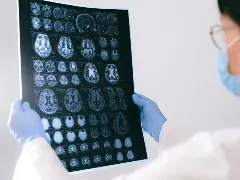

About half of all men will develop an enlarged prostate or benign prostatic hyperplasia (BPH) by age 60. Up to 90% of men over age 80 have it.
Despite its commonality, about two-thirds of men suffering from BPH won’t say anything and will live with symptoms that affect their quality of life, including having to urinate frequently, the feeling that they haven’t emptied their bladder, the urgent need to go and waking up several times a night to pee.
It doesn’t have to be that way.
BPH treatment requires a personalized approach for each patient. When they are sometimes faced with undesired side effects from drugs and waning efficacy, men may seek surgical treatment, which now includes several minimally invasive surgical therapies (MIST). These provide an alternative to transurethral resection of the prostate (TURP), which involves the removal of tissue and can come with unwanted side effects.
MIST procedures can offer a middle ground for some men that proves more beneficial than medication and less risky than traditional surgeries. One such option is prostate reshaping, a procedure involving a temporarily implanted nitinol device that gently reshapes the prostate, instead of cutting out the prostate like in traditional surgeries, to improve urine flow and relieve lower urinary tract symptoms. This procedure can be done on an outpatient basis and is an option that can improve a patient’s quality of life by providing rapid symptom relief and preserving sexual function and continence.
Choosing to undergo any treatment or procedure for BPH is a personal choice and should be a collaborative discussion between the patient and their doctor. MIST procedures may be right for men with a small- or medium-sized prostate for whom drug therapy has been unsuccessful, but who want to avoid more invasive surgery. For many men looking at BPH treatment options, maintaining sexual function is often a key factor in their decision-making process. Thankfully, prostate reshaping with the temporarily implanted nitinol device to treat BPH does not affect erectile or ejaculatory functions.
As a urologist myself, I know first-hand how impactful it can be to work with patients to find the right treatment to alleviate symptoms of BPH. Typically, I perform a diagnostic cystoscopy in my office, where I look inside the patient’s prostate and bladder using a small tube and decide whether the patient is a suitable candidate for a minimally invasive treatment.
The prostate reshaping procedure is relatively low-risk and does not limit patients to any future treatment options if they do need surgery down the line. As with any medical procedure, it does come with possible side effects, including pelvic discomfort, blood in urine, painful or urgent urination. In rare cases, the device may cause urinary tract infection or a sudden difficulty to urinate.
With multiple options available, men no longer need to suffer silently from the symptoms of an enlarged prostate. Speak with your healthcare provider to find the treatment that’s best for you.
Dr. Rahul Mehan is a urologist with the East Valley Urology Center in Mesa, Arizona with expertise in performing the iTind procedure.
Sources
American Urological Association, Urologyhealth.org, “Urology A-Z: Benign Prostatic Hyperplasia.” Updated Sept. 2021.
Better Man Clinics Podcast, “Better Stream: The iTind Procedure for the Treatment of BPH.” Aired Nov. 3, 2021.
Chughtai B, Elterman D, Shore N, et al. “The iTind Temporarily Implanted Nitinol Device for the Treatment of Lower Urinary Tract Symptoms Secondary to Benign Prostatic Hyperplasia: A Multicenter, Randomized, Controlled Trial.” (Published online ahead of print Dec. 26, 2020.) Urology.
The iTind System is intended for the treatment of symptoms due to urinary outflow obstruction secondary to benign prostatic hyperplasia (BPH) in men age 50 and above.








Comments
Post a Comment